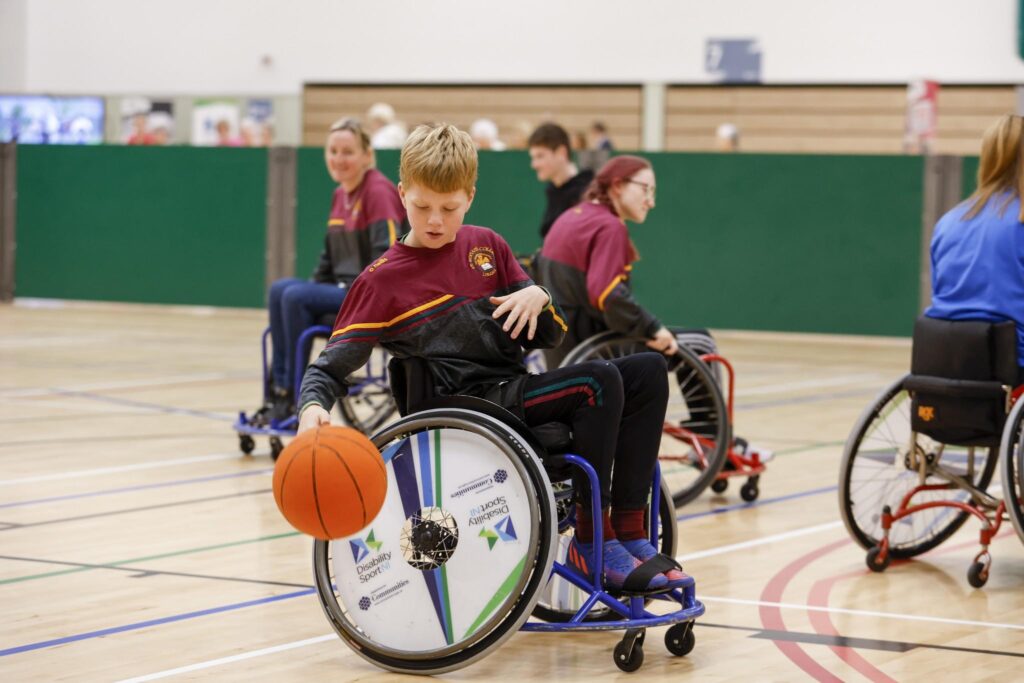In communities worldwide, the movement toward inclusive and modified sports is gaining vital momentum, opening doors for children with disabilities to engage in physical activities tailored to their needs. IDEAS Disability Information, a leading resource platform, sheds light on innovative programs and adaptive sports opportunities designed to ensure that every child, regardless of ability, can experience the joy and benefits of athletic participation. As awareness grows, these initiatives are not only breaking down barriers but also fostering social inclusion, physical health, and confidence among young athletes with disabilities.
Inclusive Sports Programs Revolutionizing Opportunities for Children with Disabilities
Adaptive sports initiatives are breaking down barriers, allowing children with disabilities to engage actively and confidently in physical activities. These programs utilize customized equipment and specially designed rules to accommodate varying abilities, fostering an environment where every participant can thrive. From wheelchair basketball to sensory-friendly swimming classes, the focus is on inclusion, skill development, and social integration. This approach not only improves physical health but also cultivates teamwork, self-esteem, and resilience among young athletes.
Community organizations and schools are increasingly partnering to provide accessible sports opportunities, often incorporating multidisciplinary support from therapists, coaches, and caregivers. Below is a snapshot of popular inclusive sports options and key benefits they offer:
| Sport | Modifications | Primary Benefits |
|---|---|---|
| Goalball | Use of auditory balls, tactile court markings | Enhances auditory skills, promotes teamwork |
| Adaptive Swimming | Modified supports, tailored coaching techniques | Improves mobility, confidence in water |
| Sledge Hockey | Specialized sledges, rule adjustments | Builds upper body strength, fosters competitive spirit |
- Personalized coaching ensures that every child’s unique needs are met.
- Peer interaction emphasizes inclusivity and friendship-building.
- Flexible programming supports gradual skill advancement at a comfortable pace.
Adaptive Equipment and Techniques Enhancing Participation and Safety
Innovations in adaptive equipment are revolutionizing how children with disabilities engage in sports, promoting both inclusion and safety on the playing field. Customized wheelchairs with adjustable seating, lightweight prosthetics designed for specific activities, and grip-enhancing gloves empower young athletes to perform confidently and effectively. These tools are complemented by safety gear tailored to diverse needs, such as helmets with enhanced cushioning, motion-support braces, and visual aids that enhance spatial awareness, ensuring a risk-minimized environment without compromising enjoyment.
Alongside equipment, specialized coaching techniques focus on fostering accessibility while honing skills. Educators and trainers employ modified game rules that emphasize teamwork and accomplishment over competition, and use signaling systems adapted for various communication abilities. Frequently utilized adaptations include:
- Visual cue cards to support athletes with hearing impairments
- Modified balls and racquets designed for easier grip and control
- Adaptive timers and scoring systems facilitating real-time feedback
- Inclusive warm-up routines accommodating a broad range of physical capabilities
| Equipment | Purpose | Benefit |
|---|---|---|
| Adjustable Sports Wheelchair | Mobility & stability | Enhances maneuverability & comfort |
| Grip-enhancing Gloves | Improved handling | Boosts control & confidence |
| Visual Cue Cards | Communication aid | Supports athletes with hearing challenges |
| Modified Balls | Ease of play | Encourages participation & fun |
Community Engagement and Support Networks Driving Success in Inclusive Sports
Local communities play a pivotal role in fostering inclusive sports environments where children with disabilities not only participate but thrive. Grassroots initiatives, supported by dedicated volunteers and families, create networks that extend far beyond game day. These support systems provide essential resources such as accessible facilities, adaptive equipment, and trained coaches who understand the unique needs of every child. The power of these networks is evident in their ability to break down barriers, promoting social inclusion and building confidence in participants.
Collaboration among schools, healthcare professionals, and disability advocacy groups further amplifies the success of inclusive sports programs. Together, they offer holistic support, ensuring children have access to modified rules, peer mentorship, and ongoing encouragement. Key elements driving this success include:
- Community-led workshops and training sessions for coaches and families
- Regular social events that foster friendships and peer support
- Funding initiatives to supply adaptive sports gear and transport
- Inclusive policy development guided by feedback from children and parents
| Support Network | Role | Impact |
|---|---|---|
| Volunteer Groups | Organize events, provide coaching | Enhanced accessibility and engagement |
| Schools | Integrate modified sports into curriculum | Higher participation rates |
| Healthcare Providers | Advise on adaptive techniques | Improved safety and performance |
| Parents & Families | Offer encouragement, create support circles | Boosted morale and continuity |
Expert Recommendations for Coaches and Educators to Foster Accessibility
To create truly inclusive environments for children with disabilities, coaches and educators must prioritize flexibility and individualized approaches. Experts emphasize the importance of quickly adapting rules, equipment, and playing areas to meet the unique needs of every child. Encouraging open communication with participants and their families helps identify specific barriers and preferred accommodations, fostering a collaborative atmosphere that empowers inclusion. Additionally, ongoing professional development focusing on disability awareness and adaptive techniques ensures that staff remain informed and confident in delivering accessible sports programs.
Practical strategies also include leveraging assistive technology and visual aids to enhance understanding and participation. Incorporating peer support systems encourages social integration and builds community spirit on and off the field. Below is a quick reference table summarizing key expert recommendations aimed at accessibility in youth sports:
| Focus Area | Recommendation |
|---|---|
| Communication | Use clear, concise instruction and visual supports |
| Equipment | Adapt size, weight, and texture for comfort and safety |
| Rules | Modify game rules to allow equitable participation |
| Environment | Create barrier-free access and safe playing fields |
| Support | Encourage buddy systems and inclusive peer interactions |
The Way Forward
As the movement toward inclusive and modified sports gains momentum, it continues to open doors for children with disabilities, fostering not only physical health but also confidence, social connection, and a sense of belonging. Organizations like IDEAS Disability Information play a crucial role in providing resources and support to families, coaches, and communities eager to create accessible sporting opportunities. With ongoing advocacy and awareness, the landscape of youth sports is gradually transforming into one where every child, regardless of ability, can experience the joy and benefits of active participation.





